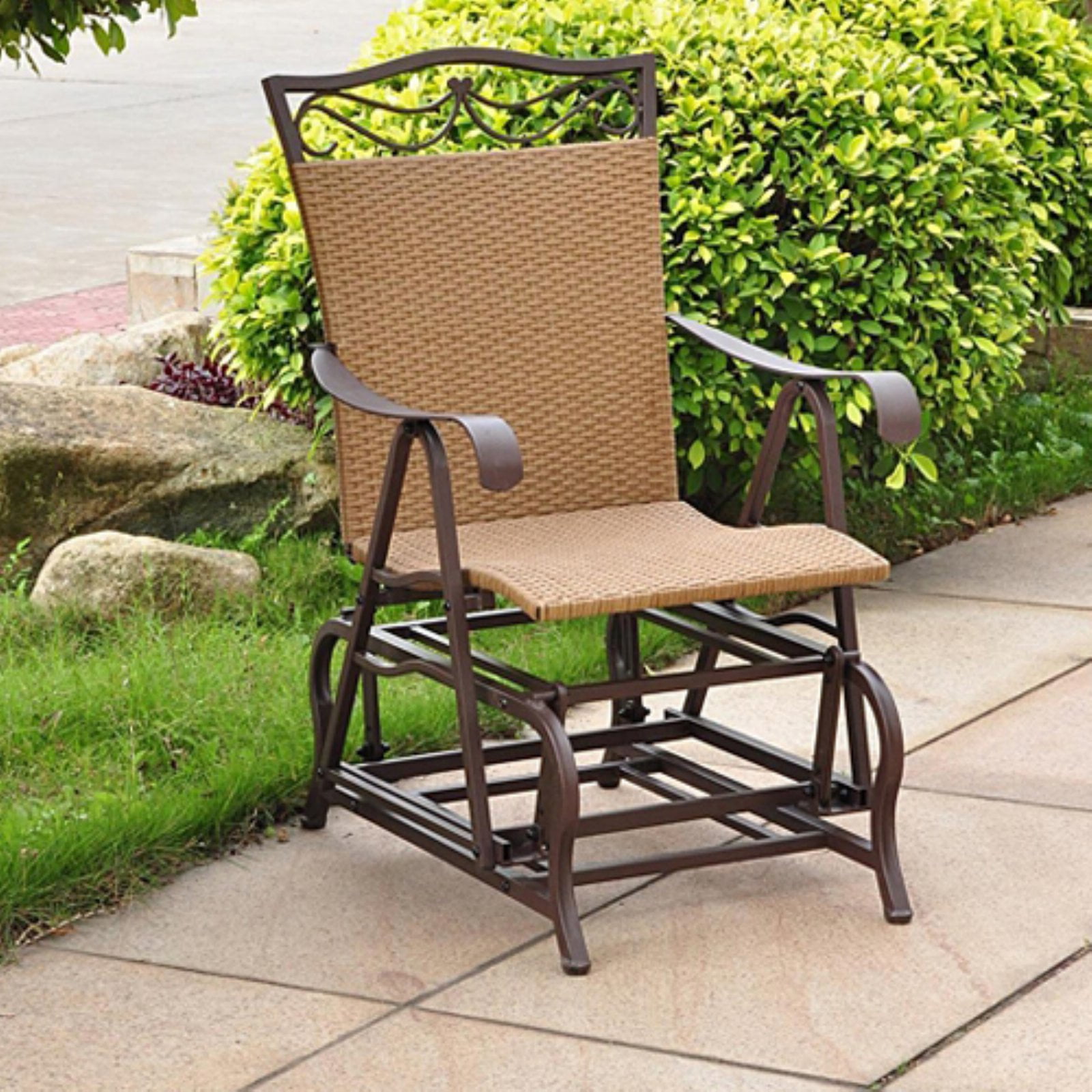Maintenance and Care of Outdoor Glider Chairs: Best Outdoor Glider Chair

Proper care ensures your outdoor glider chair remains a comfortable and stylish addition to your patio or garden for years to come. Regular cleaning and maintenance will protect your investment and prevent premature wear and tear, allowing you to enjoy its relaxing sway for many seasons. Understanding the specific needs of your chair’s material is key to its longevity.
Cleaning and Maintenance Techniques for Various Materials
The cleaning method for your outdoor glider chair depends entirely on the material it’s made from. Different materials require different approaches to ensure their beauty and durability are preserved. Using the wrong cleaning method can damage the chair’s finish or fabric.
- Wood: For wooden glider chairs, regular dusting with a soft cloth is essential. For deeper cleaning, use a mild soap and water solution, ensuring the wood is completely dry afterward to prevent warping or mildew. Avoid harsh chemicals or abrasive cleaners. Periodically, apply a high-quality wood sealant to protect against the elements.
- Wicker/Rattan: Wicker and rattan chairs benefit from gentle brushing to remove dust and debris. Use a soft-bristled brush and avoid harsh scrubbing. For stubborn stains, a solution of mild soap and water can be used sparingly. Allow the chair to air dry completely, avoiding direct sunlight which can cause fading.
- Metal: Metal glider chairs are generally durable, but they can rust if not properly cared for. Regularly wipe down the chair with a damp cloth to remove dirt and grime. For rust prevention, apply a rust-resistant spray paint or sealant annually. Avoid using abrasive cleaners that can scratch the surface.
- Fabric (Cushions): Fabric cushions should be regularly vacuumed to remove dirt and dust mites. Spot clean spills immediately with a mild detergent and water solution. For more thorough cleaning, consult the manufacturer’s care instructions for the specific fabric. Cushions should be stored indoors during inclement weather to prevent moisture damage.
- Plastic/Resin: Plastic or resin glider chairs are generally low-maintenance. They can be cleaned with a mild soap and water solution and a soft sponge. Rinse thoroughly and allow to air dry. Avoid abrasive cleaners that could scratch the surface.
Common Problems and Solutions
Several issues can affect the performance and lifespan of outdoor glider chairs. Addressing these problems promptly can prevent further damage and extend the chair’s life.
- Rust (Metal Chairs): Rust is a common problem with metal chairs exposed to the elements. Regular cleaning and the application of a rust-resistant sealant can prevent rust formation. For existing rust, use a wire brush to remove loose rust and then apply a rust converter or paint.
- Fading (Fabric/Wicker): Prolonged exposure to sunlight can cause fading. Use outdoor-rated fabrics and sealants to minimize fading. Consider using a patio umbrella or placing the chair in a shaded area to reduce sun exposure.
- Loose Joints/Screws: Over time, screws and joints can loosen due to weather exposure. Regularly check for loose fasteners and tighten them as needed. If the joints are severely damaged, consider seeking professional repair.
- Mildew/Mold (Wood/Fabric): Mildew and mold can develop in damp environments. Ensure proper ventilation and promptly address any spills or moisture accumulation. Clean affected areas with a solution of bleach and water (following manufacturer’s instructions) and allow the area to dry completely.
- Torn Fabric (Cushions): Tears in fabric cushions can be repaired with fabric glue or patching material. For significant damage, it might be necessary to replace the cushion.
Yearly Maintenance Checklist, Best outdoor glider chair
Best outdoor glider chair – Spring: Clean the entire chair thoroughly; inspect for loose screws or damage; apply wood sealant (if applicable); treat any rust spots; replace worn-out cushions.
Summer: Regularly clean and inspect the chair; address any minor issues promptly; protect from extreme weather conditions.
Autumn: Clean the chair thoroughly; apply a protective sealant (if applicable); prepare for winter storage.
Winter: Store the chair indoors in a dry place, preferably covered to prevent dust accumulation and damage; if storing outside, use a protective cover.
